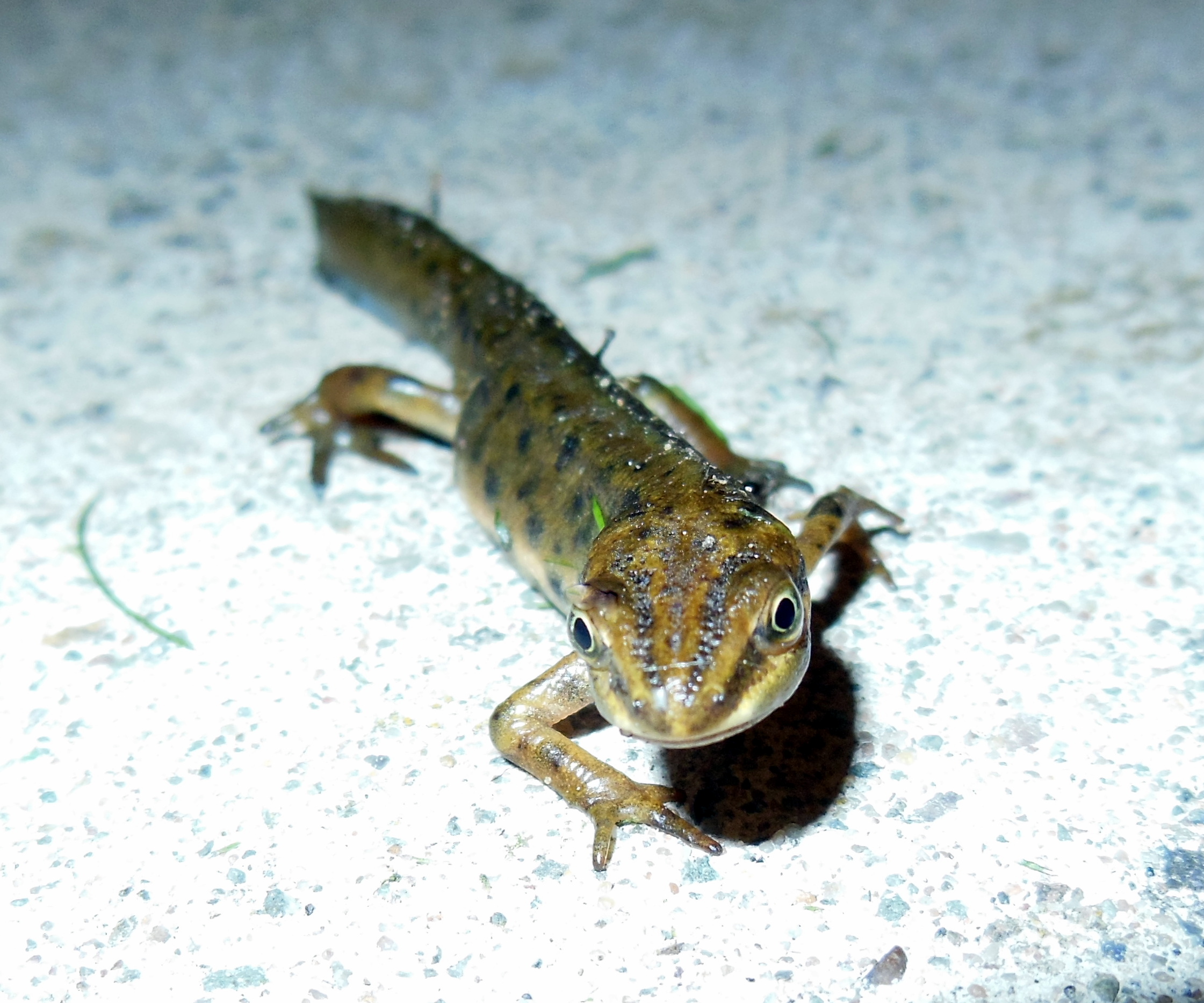
Smooth Newt (Triturus vulgaris) – from Wikipedia
The week before last, joined by a third torch in the form of Mary, Sutton’s Biodiversity Education officer, we finally did the last of our 4 week set of newt surveys at the Sutton Ecology Center ponds.
Unfortunately bad weather had got in our way for the last few weeks and stopped us from undertaking the final survey sooner, meaning we didn’t quite cover the breeding season as accurately as we hoped!
Newt breeding season in the UK tends to start in March, continue through April and into May – but as we entered late May it seemed the newt’s body clocks were ticking, as there were far fewer numbers to be seen around the SEC ponds. Even with an extra pair of hands and eyes to help spot the little blighters!
We started with the small pond by the allotments, with a 3 torch strong beam only reaching disappointingly close to the surface of the murky water. We got a measly 4 newts (along with a common frog and a toad, to be fair), half as many as we found on our first survey. The pool was hardly brimming with newts. It was, however, absolutely teeming with mosquito larvae.
Something to look forward to on any shirts and shorts summer forays at the Ecology Center, I suppose. I certainly managed to get bitten a lot that night, by the weekend my hand was so swollen it looked like a comedy foam finger!
We moved on towards the two small ponds and the newt count was still conspicuously low. I saw nothing bar a few aquatic insects in the first of the two. There was a small movement somewhere in the depths which we counted as a questionable newt, but alas my eyes weren’t sharp enough to see it. I’ll take the others’ word for it, one newt is better than none!
The other of the small ponds also only had a single newt (at least this one stuck around to be seen), a common frog and a common toad. With nothing else to be seen we moved on to the smaller pond by the pond shed.
I was getting ready to be disappointed. This pond had been a hotbed of activity during the first few surveys, turning up a whopping 31 newts in the second. Given the low counts of the night, though, I was expecting a similarly low number. I was pleasantly surprised. Slightly better than the smaller ponds we had already visited, we got 10 newts, a toad and a frog.
This wasn’t the reason for my surprise though. Above the surface of the water, hanging from the reeds were two large, pulsing dragonflies moulting their larval skin. With flashes of bright green popping out of the brown exuviae (that’s the dead skin to you and I), they were most likely Southern Hawkers (Aeschna cyanea). I had seen exuviae still stuck to the vegetation in that pond in previous years but never seen the process happen in front of me. Seeing this moulting happening also means we know the identity of the monster dragonfly nymph we had seen stalking the depths of the pond!
Moving on to the main pond we were struck by how much the vegetation had grown in the preceding weeks, making newt spotting tough. Even despite the additional cover, I was a little dissapointed by the count, giving us only 30 smooth newts. This may sound quite a lot but given that we counted 42 on the second survey and a massive 75 on the third, I was a little let down. I suppose that’s the way the cookie crumbles.
The newts have evidently had their fun during the mating season and are moving on.
I’ll miss these regular nighttime visits to the ponds. I look forward to keeping an eye out for the delicately folded leaves of subaquatic vegetation where the females have laid their precious eggs, and then finding the larvae and efts later in the year.
Overall, I can safely say that we have a good, healthy population of smooth newts (Triturus vulgaris) at the Sutton Ecology Center. The Great Crested Newt (Triturus cristatus) didn’t turn up in our surveys. While this isn’t great news for the great crested newt, it probably is good news for our pond. Last year a possible Great Crested Newt larva was pulled from the main pond during a school pond dipping session. These rare newts are heavily protected, meaning that our normal methods of pond maintenance would have had to have stopped had we found evidence of Great Crested Newt breeding.
So good luck to all the new mummy and daddy newts from our ponds. They’re probably off finding foraging areas and places to hide in the surrounding woodland or further afield. Hopefully in the next few weeks we will be finding larvae and efts from successful eggs, another generation in the great circle of life!







